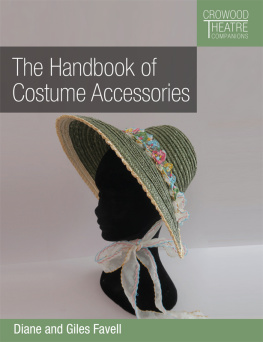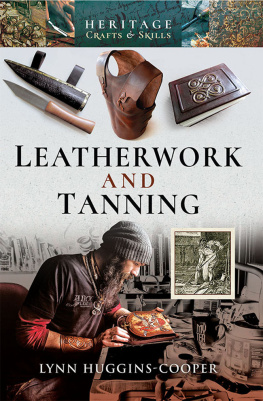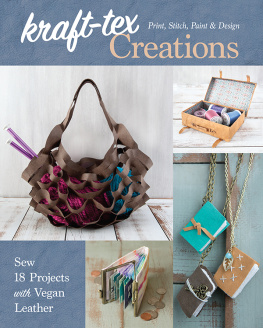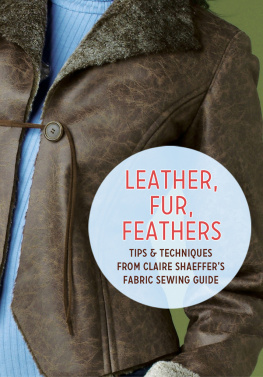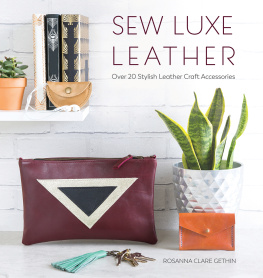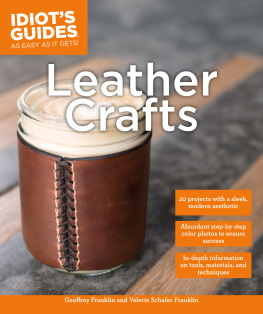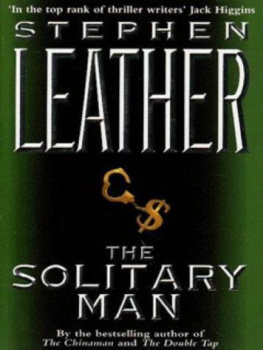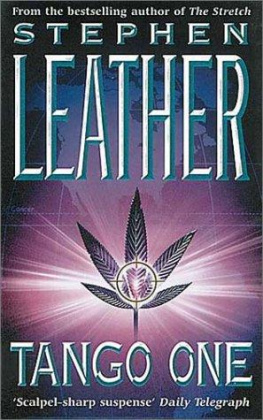PRACTICAL TANNING
A HANDBOOK
OF
MODERN PROCESSES, RECEIPTS, AND
SUGGESTIONS
FOR THE
TREATMENT OF HIDES, SKINS AND PELTS
OF EVERY DESCRIPTION,
INCLUDING
VARIOUS PATENTS RELATING TO TANNING, WITH SPECIFICATIONS.
BY
LOUIS A. FLEMMING,
AMERICAN TANNER.
THIRD EDITION, IN GREAT PART REWRITTEN AND THOROUGHLY REVISED.
ILLUSTRATED BY SIX FULL-PAGE PLATES.
Copyright 2013 Read Books Ltd.
This book is copyright and may not be reproduced or copied in any way without the express permission of the publisher in writing
British Library Cataloguing-in-Publication Data
A catalogue record for this book is available from the British Library
Leather Crafting
Leather is a durable and flexible material created by the tanning of animal rawhide and skin, often cattle hide. It can be produced through manufacturing processes ranging from cottage industry to heavy industry, and has formed a central part of the dress and useful accessories of many cultures around the world. Leather has played an important role in the development of civilisation from prehistoric times to the present, and people have used the skins of animals to satisfy fundamental (as well as not so essential!) needs such as clothing, shelter, carpets and even decorative attire. As a result of this importance, decorating leather has become a large past time. Leather crafting or simply leathercraft is the practice of making leather into craft objects or works of art, using shaping techniques, colouring techniques or both. Today, it is a global past time.
Some of the main techniques of leather crafting include:
Dyeing - which usually involves the use of spirit- or alcohol-based dyes where alcohol quickly gets absorbed into moistened leather, carrying the pigment deep into the surface. 'Hi-liters' and 'Antiquing' stains can be used to add more definition to patterns. These have pigments that will break away from the higher points of a tooled piece and so pooling in the background areas give nice contrasts. This leaves parts unstained and also provides a type of contrast.
Painting - This differs from leather dyeing, in that paint remains only on the surface whilst dyes are absorbed into the leather. Due to this difference, leather painting techniques are generally not used on items that can or must bend, nor on items that receive friction, such as belts and wallets - as under these conditions, the paint is likely to crack and flake off. However, latex paints can be used to paint flexible leather items. In the main though, a flat piece of leather, backed with a stiff board is ideal and common, though three-dimensional forms are possible so long as the painted surface remains secured. Unlike photographs, leather paintings are displayed without a glass cover, to prevent mould.
Stamping - Leather stamping involves the use of shaped implements (stamps) to create an imprint onto a leather surface, often by striking the stamps with a mallet. Commercial stamps are available in various designs, typically geometric or representative of animals. Most stamping is performed on vegetable tanned leather that has been dampened with water, as the water makes the leather softer and able to be compressed with the design. After the leather has been stamped, the design stays on the leather as it dries out, but it can fade if the leather becomes wet and is flexed. To make the impressions last longer, the leather is conditioned with oils and fats to make it waterproof and prevent the fibres from deforming.
Molding and shaping - Leather shaping or molding consists of soaking a piece of leather in hot or room temperature water to greatly increase pliability and then shaping it by hand or with the use of objects or even molds as forms. As the leather dries it stiffens and holds its shape. Carving and stamping may be done prior to molding. Dying however, must take place after molding, as the water soak will remove much of the colour. This mode of leather crafting has become incredibly popular among hobbyists whose crafts are related to fantasy, goth / steampunk culture and cosplay.
PREFACE TO THE THIRD EDITION.

The second edition of Practical Tanning having been exhausted in a comparatively short time, and there being a continued demand for the book, the publishers have deemed it advisable to issue a third edition. Acting upon their suggestion, the author has carefully revised and in great part rewritten the volume, incorporating into it much new and valuable information, that should prove of service to anyone that is desirous of acquiring a knowledge of modern methods of the leather-dressers art.
Like the first, and second, editions, this volume presents the results of the authors studies and researches, as well as of his own experience and that of other practical men with whom he has come into association and consultation. Nothing has been incorporated that has previously appeared in any other American of English work on the subject. The author has, however, consulted and made free use of the trade papers, and particularly acknowledges his indebtedness to THE SHOE AND LEATHER REPORTER, Boston, Mass., for material taken from its columns, and also to THE CASSELLA COLOR CO., of New York, for information relative to the most approved methods of dyeing leather and furs.
This volume is, as the title indicates, essentially a practical, and not a theoretical or technical, treatise, and it has been aimed to give the details of tannery processes with such clearness and precision that nothing further in the way of explanation is required. The receipts, formulas, and instructions that are given have been used in actual practice, or been tested experimentally, and their value has thus been demonstrated. Carried out with intelligence and care, they will produce satisfactory results.
In the Appendix a number of patented processes are described. No doubt the intelligent tanner and student will find much of interest and suggestion in this portion of the book.
The full table of contents and exhaustive index with which the volume is supplied render reference to any subject or detail in it, prompt, easy, and satisfactory.
The author presents this new edition of Practical Tanning with confidence in its superiority over its predecessors, and he believes it will be appreciated for its practical usefulness. He would like to receive from those who use his book, expressions of their opinion of the same, also any suggestions, receipts, formulas, and descriptions of processes that may be of assistance and interest to others. He may be addressed in the care of the Publishers.
LOUIS A. FLEMMING.
CHICAGO, ILL., October, 1916.
CONTENTS.

.
.
; Formulas for depilatories
; Formulas for bran drenches
Deliming glove leather and glazed leather;
; Modes of fat-liquoring
Receipts for fat-liquors
; General use of artificial dyes for this purpose; Preparation of the skins for dyeing
; Method of obtaining colors of superior fastness
, by the process invented by Robert W. Griffin
Formulas for seasonings
; Eitners process
Other processes of formaldehyde tannage
; Tawing and retanning the skins
Coloring the leather
; Preparation of the skins for dyeing
Production of antique effects
Dyeing by the staining process;
; Dyeing leather that has a very defective grain
Methods used in finishing India-tanned ooze leather


